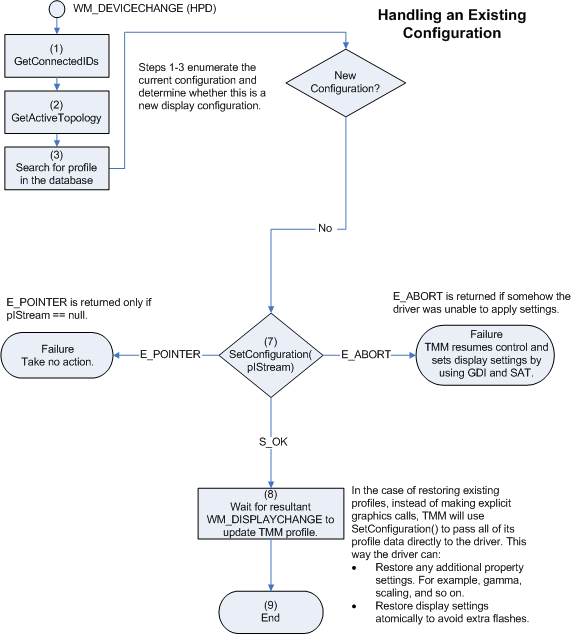Handling Existing Monitor Configurations
Besides detecting new monitors and launching the Transient Multi-monitor Manager (TMM) dialog in a two-monitor configuration, TMM also must restore previous display configurations. TMM can restore display configurations by passing display data to the user-mode display driver through the IViewHelper::SetConfiguration method. TMM will allocate memory and store display modes and topology information in the memory. TMM passes this memory in an IStream interface that the pIStream parameter of SetConfiguration points to. The user-mode display driver can also modify or fold in other display data (for example, gamma or TV settings). When the driver is finished with the display data, the driver calls the IStream::Release method to free the memory.
The following figure shows the flow of operations that occur when TMM restores an existing monitor configuration.

Feedback
Coming soon: Throughout 2024 we will be phasing out GitHub Issues as the feedback mechanism for content and replacing it with a new feedback system. For more information see: https://aka.ms/ContentUserFeedback.
Submit and view feedback for